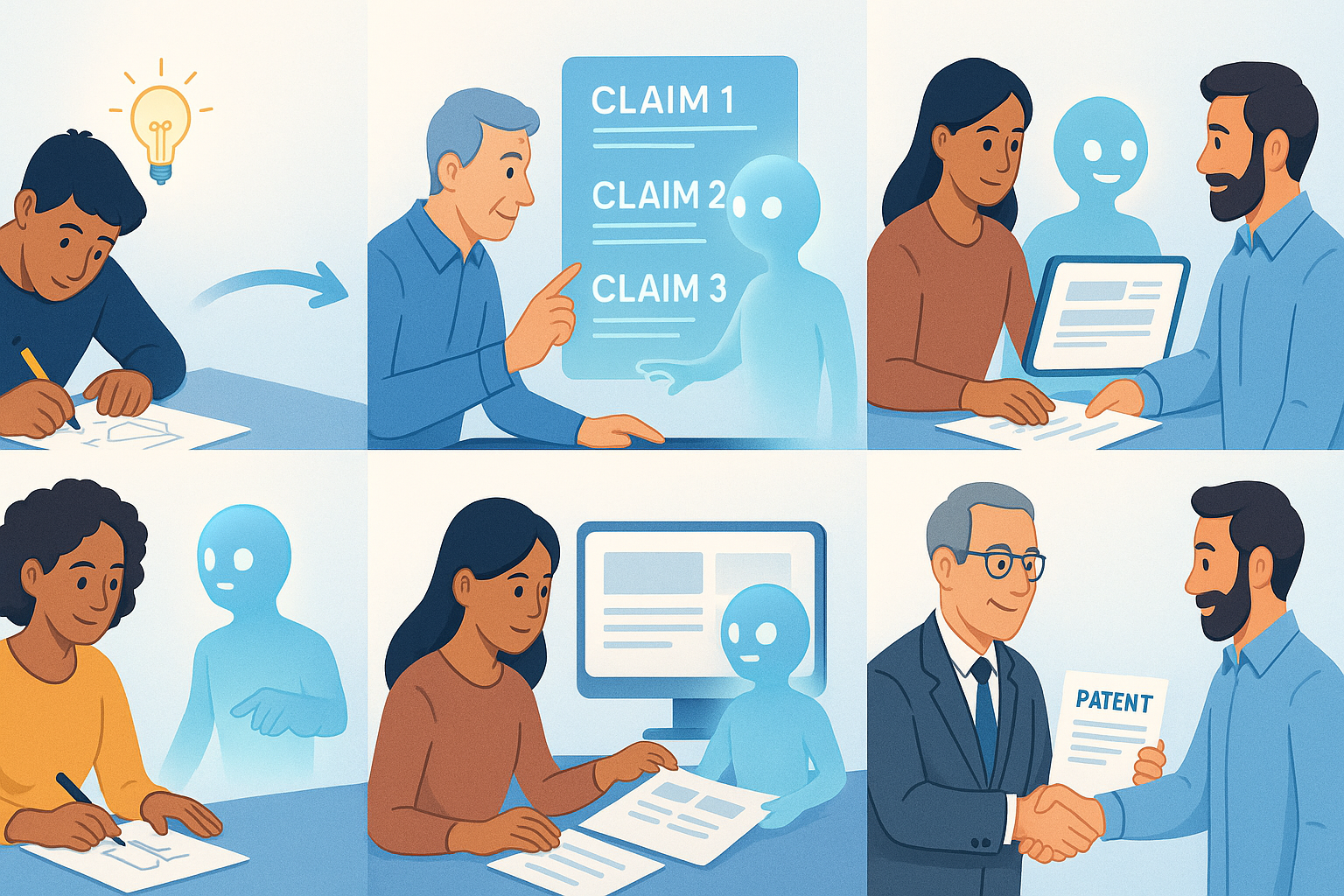Why waste months and thousands of dollars drafting patents the old way? Today, you can get from napkin sketch to submission-ready draft in days—not weeks—using AI tools trained on the world's best patent applications. Here's exactly how to do it.
Step 1: Capture the Real Innovation—Don't Skip the Brief
What goes wrong:
Inventors dive straight into writing claims. That's how patents end up generic, unclear, or impossible to enforce.
What actually works:
Start with InventGenie's Invention Brief Wizard—think of it as the world's best interview with yourself. It asks:
- What's the real-world problem?
- What are the essential features?
- How is this different from what's out there?
- What optional/alternative features exist?
Why it matters:
A structured brief is the blueprint for a patent that actually protects what matters—and gets approved.
Inventor Scenario:
A founder rushed out a patent for a smart water bottle but missed the key novelty (a learning algorithm for hydration reminders).Result: rejected—too broad, too vague.Second time, structured with AI—claim survived.
Step 2: Run a Real Prior Art Scan—Don't File Blind
What goes wrong:
Most inventors "Google it" and move on. Examiners find what you missed—then it's back to square one.
What actually works:
InventGenie's AI does semantic prior art search—not just keywords, but context and meaning.
- Scans global patents and literature (USPTO, WIPO, EPO)
- Flags overlaps, ranks risk by color and score
- Calls out specific claim phrases in danger
Why it matters:
Avoid wasting time (and legal fees) on claims that will get bounced.
Inventor Scenario:
A drone startup found prior art they'd never heard of—just before filing. They tweaked their claims and sailed through review.
Step 3: Auto-Draft Strong Claims and Specs—Save Weeks, Not Just Hours
What goes wrong:
Manual drafting leaves holes—missing antecedents, weak language, unsupported features. You risk §112 or §102 rejections.
What actually works:
InventGenie auto-generates:
- Independent claims (broad but supportable)
- Dependent claims (fallbacks and variants)
- Specification (background, summary, detailed description)
- All terms mapped to your invention brief
Bonus:
AI flags vague terms and "functional language" that might cause trouble—then rewrites for clarity.
Before:
"A wearable that tracks health."
After InventGenie:
"A system comprising a multi-sensor wearable device, with adaptive alerting thresholds set by machine learning algorithms based on user-specific biometric trends."
Step 4: Instant Abstracts and Summaries—For Humans and Examiners
What goes wrong:
Abstracts get ignored, or are copied from the summary. Examiners (and investors) get confused, or miss the real invention.
What actually works:
InventGenie writes:
- 100–150 word, USPTO-ready abstracts
- Clean, technical summaries for fast comprehension
- Cross-links to your actual claims—so nothing's lost in translation
Why it matters:
A clear abstract means your invention gets found (and funded) faster.
Step 5: Human Review—Expert Oversight at a Fraction of the Cost
What goes wrong:
AI can draft—but only an expert can spot legal landmines, fix logic gaps, or handle edge cases.
What actually works:
- Export your draft to Word or PDF, annotated by InventGenie ("AI-generated" vs. "user input")
- Share it with your patent attorney or agent—they review, refine, and file
- Most lawyers charge 60–80% less for review than full drafting
Why it matters:
AI does the heavy lifting; legal pros handle the fine print. You get the best of both worlds—fast, affordable, and safe.
Inventor Scenario:
First-time inventor with InventGenie: paid $2,500 for expert review instead of $18,000 for end-to-end drafting.
Bonus: Figures, Flowcharts, and Auto-Labeling (No Illustrator Needed)
- Auto-labels figure captions based on your description
- Sketch-to-claim mapping—upload your rough drawings, and AI tags them for you
- Coming soon: line-art figures for common components (no more blank boxes!)
Ready to File? Here's How to Get Started in Minutes
Why wait? With InventGenie, you'll:
- Build your patent brief and claims in under an hour
- Catch fatal flaws before you pay a cent in legal fees
- Own your entire invention story—from sketch to spec
- Cut your cost by 60–80% (and your stress by 100%)
